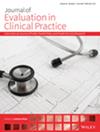Lace Index: Predict the High-Risk of 30-Days Readmission of Patients With Acute Myocardial Infarction: National Health Insurance Claims Data 2011–2020
Abstract
Background
Readmission following acute myocardial infarction (AMI) poses significant challenges to health systems and patient outcomes. The LACE index, a composite of Length of stay, Acuity of admission, Comorbidities, and Emergency department visits, is widely used for readmission prediction. However, its performance in large-scale, real-world Korean cohorts remains understudied.
Objective
This study aimed to validate the predictive performance of the LACE index for 30-day readmissions in AMI patients using a nationally representative Korean cohort.
Methods
This retrospective cohort study analyzed data from the Korean National Health Insurance Service Sample (NHISS) database from 2011 to 2020. A total of 609,640 adult patients hospitalized for AMI were included. The LACE index was calculated for each patient, and 30-day readmissions were identified. Logistic regression was used to estimate odds ratios (ORs) for readmission. Model discrimination was assessed using ROC curve analysis and C-statistics. Subgroup and survival analyses were performed by age, LACE score, and comorbidity burden.
Results
Among 609,640 AMI patients, 205 (0.034%) experienced 30-day readmission. Patients with a LACE score of ≥ 10 had significantly higher odds of readmission (OR = 2.65; 95% CI: 1.68–4.19, p < 0.001) compared to those with scores 0–4. Middle-aged adults (35–64 years) also showed elevated readmission risk (OR = 3.42; 95% CI: 1.74–6.73, p < 0.001), while older adults (≥ 65 years) did not have significantly different risk. The LACE index showed moderate discriminatory performance (C-statistics = 0.71). Kaplan–Meier survival curves demonstrated significantly lower 30-day survival among patients with LACE ≥ 10.
Conclusions
Study findings suggest the LACE index is a useful tool for predicting 30-day readmissions among AMI patients in Korea. Its simplicity and moderate accuracy support its application in clinical and policy-level risk stratification strategies. Future prospective studies should refine prediction models by incorporating additional clinical variables.


 求助内容:
求助内容: 应助结果提醒方式:
应助结果提醒方式:


